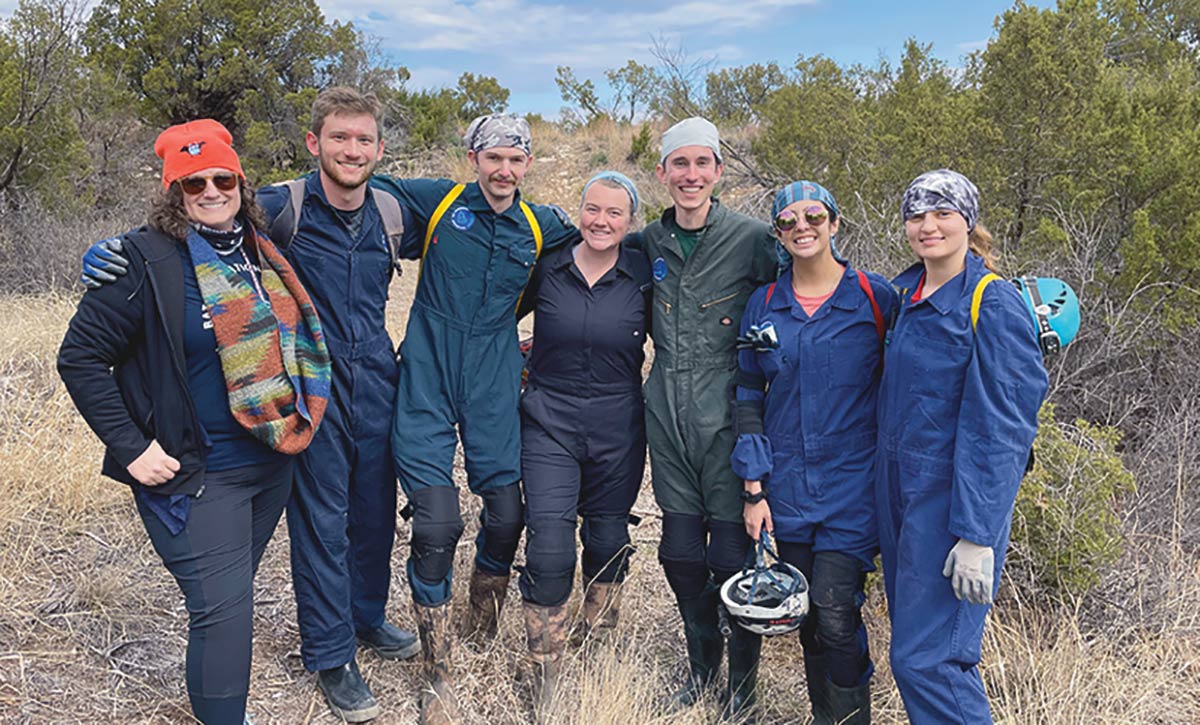
Vacationing with the Bats
Jenna Crabtree, Taylor Francis, Alex LeGresley, Russel Oplinger, Ben Walker, and Josie Shaw, all students from the Aggie Grotto, an off-campus caving club, volunteered to work alongside Bat Conservation International (BCI) staff collecting important data on bats in the Texas Panhandle.

“I am so impressed at the passion and commitment exhibited by these students. They are all between the ages of 20 and 23 but have different interests, backgrounds, and college majors. It was fun and valuable for them to contribute their caving expertise to this research,” Dr. Adams says.
The students say their week with BCI was eye-opening.
Crabtree talks about being fascinated by bats and caves on her first visit to Carlsbad Caverns National Park in elementary school. Last year, she served as an intern with the park.

Francis says she was first intrigued by the adventure of caving in high school, and excited to learn more. Working with BCI, she was in awe of seeing moving clumps of bats huddled inside the caves and enjoyed becoming familiar with traits that helped her identify species. For example, male Townsend’s big-eared bats (Corynorhinus townsendii) tend to roost alone.
Crabtree and Francis said getting to know Dr. Adams and Fran Hutchins, Director of Bracken Cave Preserve, were among the best parts of their experience.
“I’m grateful we were allowed to work as volunteers,” Francis says. “Most of the time, it didn’t feel like work. BCI did us a favor in trusting us and allowing us to learn about the bat world.”